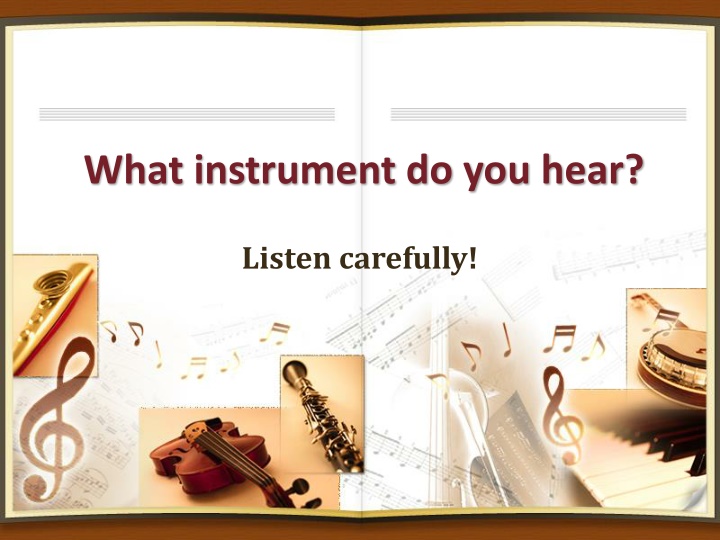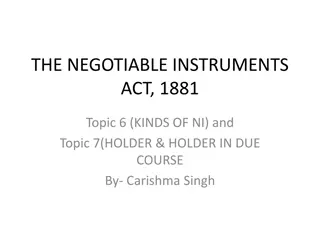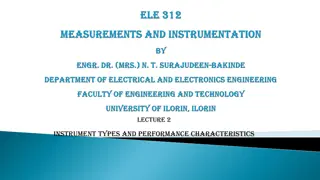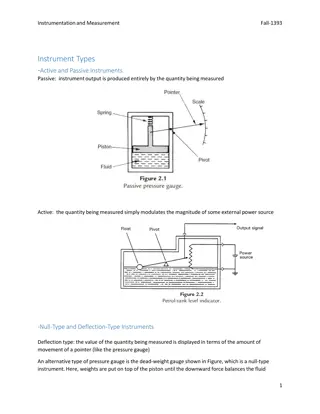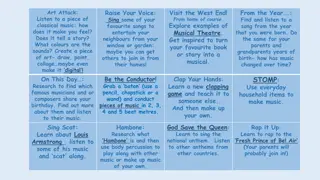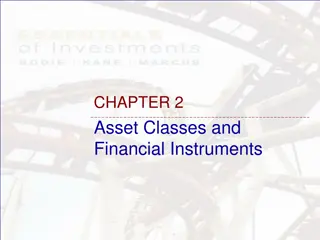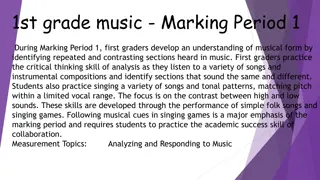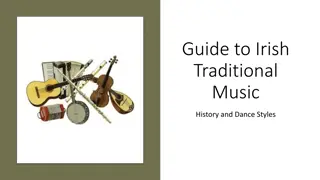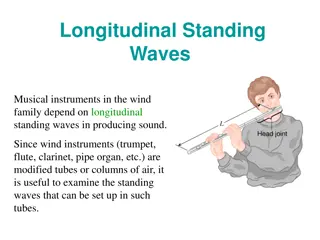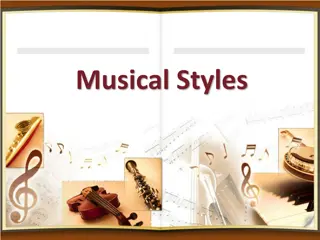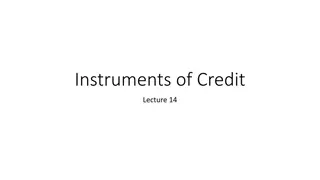Timbre in Musical Instruments
Explore the concept of timbre in musical instruments, including how different instruments produce unique sounds through vibration. Learn about woodwind, brass, and string families, and use descriptive words to describe timbre qualities. Enhance your knowledge of how instruments such as clarinet, oboe, flute, strings, and percussion create sounds. Listen attentively to identify instruments in compositions and discover the missing elements. Delve deeper into the significance of timbre and its role in shaping music.
Download Presentation

Please find below an Image/Link to download the presentation.
The content on the website is provided AS IS for your information and personal use only. It may not be sold, licensed, or shared on other websites without obtaining consent from the author.If you encounter any issues during the download, it is possible that the publisher has removed the file from their server.
You are allowed to download the files provided on this website for personal or commercial use, subject to the condition that they are used lawfully. All files are the property of their respective owners.
The content on the website is provided AS IS for your information and personal use only. It may not be sold, licensed, or shared on other websites without obtaining consent from the author.
E N D
Presentation Transcript
What instrument do you hear? Listen carefully!
Timbre Pronounced tam-bur
Timbre Pronounced tam-bur The sound of an instrument is its timbre. The timbre of something is what makes a particular sound unique from another sound. Example: a guitar has a different timbre than a piano.
How do instruments make sounds? Read page 68: Each instrument has its own special sound, or timbre. To make a sound on most wind instruments, the player blows air into the instrument, causing the air to vibrate. The string instrument s sound is made by vibrating strings. The way an instrument makes sound affects its timbre.
How do instruments make sounds? Clarinet, oboe, bassoon and saxophone: Reeds vibrate and create the sound. Flute: Air blown through the tone hole vibrates. Strings: Vibrate when plucked, strummed, or bowed. Percussion: Instruments are struck so they vibrate.
Allegro Molto from Quartet Listen to this woodwind quartet. What instruments do you hear? What instrument is missing?
Descriptive Words for Timbre soft hollow thin smooth liquid sweet rich warm mellow airy mellow deep dark full gentle reedy (reed instruments) nasal harsh brilliant bright rough brassy (brass instruments) round fat Pitch: high, medium high, medium low, low.
Woodwind and Brass Families
Describe the timbre Using a piece of paper, write what family the instrument is in and write a description of the instrument s timbre. http://www.beginband.com/sndclips.shtml
